CREW 315 SOL SUMMARY REPORT 28-04-2025
Sol: 8
Summary Title: Fixing and Flying
Author’s Name: David Laude, Commander
Mission Status: Nominal. All systems operational.
Sol Activity Summary:
Once gathered around the table, the same enthusiasm for the day ahead was apparent in all the crew. The low murmur of conversation grew into lively chatter. It was a small thing, these breakfasts together, but it anchored us — a ritual that made the vast, lonely landscape outside feel a little less distant.
It had been an unusual week on Mars. Clouds, rare and almost otherworldly themselves, had drifted across the ochre skies for days now, muting the sun and casting long, strange shadows over the base. The crew sometimes found themselves pausing by the narrow observation windows to watch them: delicate, silver-grey wisps that seemed almost painted onto the sky.
Normally, the Martian nights were clear and sharp, the stars cutting through the blackness like shards of crystal. But lately, the clouds had stubbornly lingered into the evening, hiding the heavens from view. They spoke often of it at the table — the longing to see the cosmos laid bare again, to look through the small portals overhead and be reminded of the vastness beyond.
Tonight, they all hoped, would be different. A clear night had been forecasted, and with it, the chance to gather again after dinner, standing shoulder to shoulder beneath the stars, looking up at the same universe they had once only dreamed of touching.
Michael and Tim ventured just outside the hab in their EVA suits, the familiar hiss and click of the airlock sealing behind them. The Martian dust, kicked up by days of unsettled weather, hung faintly in the thin air. Their boots crunched lightly against the regolith as they made their way toward the tunnel — the long, flexible connector that linked the main habitat to the other modules.
Over the past few days, the shifting temperatures and unexpected winds had strained some of the tunnel’s coverings. It wasn’t a critical failure yet, but even a small breach could quickly escalate in this harsh environment. Above them, the clouds continued to swirl, casting strange patterns across the barren ground. Inside their helmets, they could hear each other’s breathing and the occasional crackle of radio chatter — small reminders of their isolation, and of the teamwork that kept them alive out here, far from home.
Inside the hab, while the others toiled elsewhere, Tim was busy preparing dinner — a humble but comforting meal of beans, macaroni, and cheese. The small galley hummed with the familiar sounds of cooking: the soft bubbling of the pot, the occasional clatter of utensils, and the low whir of the water recycler working steadily in the background.
Tim moved with an easy rhythm, a veteran of many such dinners on Mars. Supplies had to be stretched carefully here, and improvisation was almost an art form. He stirred the beans in a battered steel pan, glancing occasionally at the clock. The macaroni simmered alongside, softening into a creamy, cheesy mass. He knew how much these shared meals mattered — how food had become more than just fuel out here. It was connection. It was memory. It was home, carved out of a place that didn’t naturally offer it.
Dave and Koi spent part of the afternoon conducting drone flight tests, both in and out of their EVA suits, part of an ongoing experiment to assess how the bulky gear affected fine motor skills and control precision. The drones dipped and weaved, responding with sharp, near-instantaneous feedback. Without EVA suits the flights were well controlled and accurate. With EVA suits on there were some visibility issues of the drone and of the FPV display, the later being washed out from ambient light. Gloves contributed to poorer precision.
Dave, Koi, and Elena set out just after midday in their EVA suits as they made their way toward Galileo Road. The narrow track, little more than a worn path across the regolith, led them toward Compass Rock — a massive, cone shaped outcrop that jutted out of the flat landscape like a broken tooth, visible even from kilometers away. The walk was steady but cautious. Their radios buzzed occasionally with check-ins back to the hab, but otherwise, the world around them was silent — only the faint crunch of their boots against the dust marked their passage.
When they reached their launch site — a relatively flat clearing about 300 meters from the base of Compass Rock — they paused to set up. The machine was small, sturdy, and adapted for thin atmospheres, its rotors a little oversized to handle the weak Martian air. The drone lifted off with a faint hum, wobbling for just a moment before stabilizing. Koi’s gloved hands moved smoothly over the controls, and the drone climbed higher, tilting toward Compass Rock. Koi skillfully piloted the drone forward, drawing it in a slow, sweeping arc around the ancient formation. As it circled, the drone’s high-definition camera captured every angle — the craggy fissures, the wind-scoured face of the stone, the patterns etched by centuries of harsh Martian weather. After nearly twenty minutes of circling and scanning, Koi guided the drone back, letting it descend in a careful spiral until it touched down softly near their feet. With the drone safely stowed and the data secured, they turned back toward Cow Dung Road, Compass Rock shrinking behind them as they made their way home.
LOOK AHEAD PLAN:
Walking EVA in morning to nearby ridge west of North Ridge with Michael, Koi and Elena.
Afternoon EVA to make final attempt to fly drone close to Monolith on this mission after having determined its position on map and plotted a course to it.
Artist will contribute to daily Hab activities.
More delicious food making.
Anomalies in Work: None
Weather: Temperature: 62º, 1500; Sky: Partly Cloudy, 1500; Gust: 15 mph; 1500; Wind:6 mph; 1500
Crew Physical Status: All in Good Health + Spirits
EVAs Completed:
EVA 14: 1010-11:58
Purpose: The crew was to explore the area surrounding the station and accomplish the following objectives:
· Scanned a rock sample with a constructed shroud out on EVA.
· Crew Artist took photos for more artwork and sketches to be composed post-mission.
· Repaired some tunnel tarp rips from the exterior surface.
Destination: Area around Hab
Coordinates (use UTM WSG 84) : Easting 518200, Northing 4251000
EVA Participants : David Laude (Commander), Urban Koi (HSO)
EVA 15: 1400-1800
Purpose: Fly drone from observatory no flight suit on specific pattern and compare performance to with flight suit. Go to Galileo Rd and from ridge before drop fly drone while on EVA and take photos of all sides of Compass Rock.
Destination: See above
Coordinates (use UTM WSG 84): 4252100N, 519000W
EVA Participants: Michael Andrews (Crew Engineer and EVA Lead) and Tim Gagnon (Crew Artist)
Reports to Be Filed: Sol Summary, Journalist Report, Crew Photos, Greenhab Report, Operations Report, EVA reports, EVA Request(s)
Support Requested: None at this time.

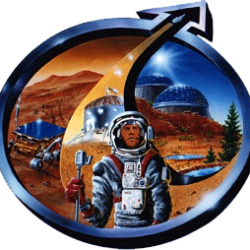

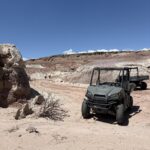
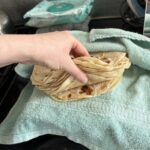
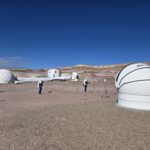
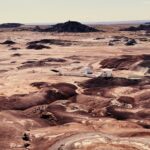

You must be logged in to post a comment.